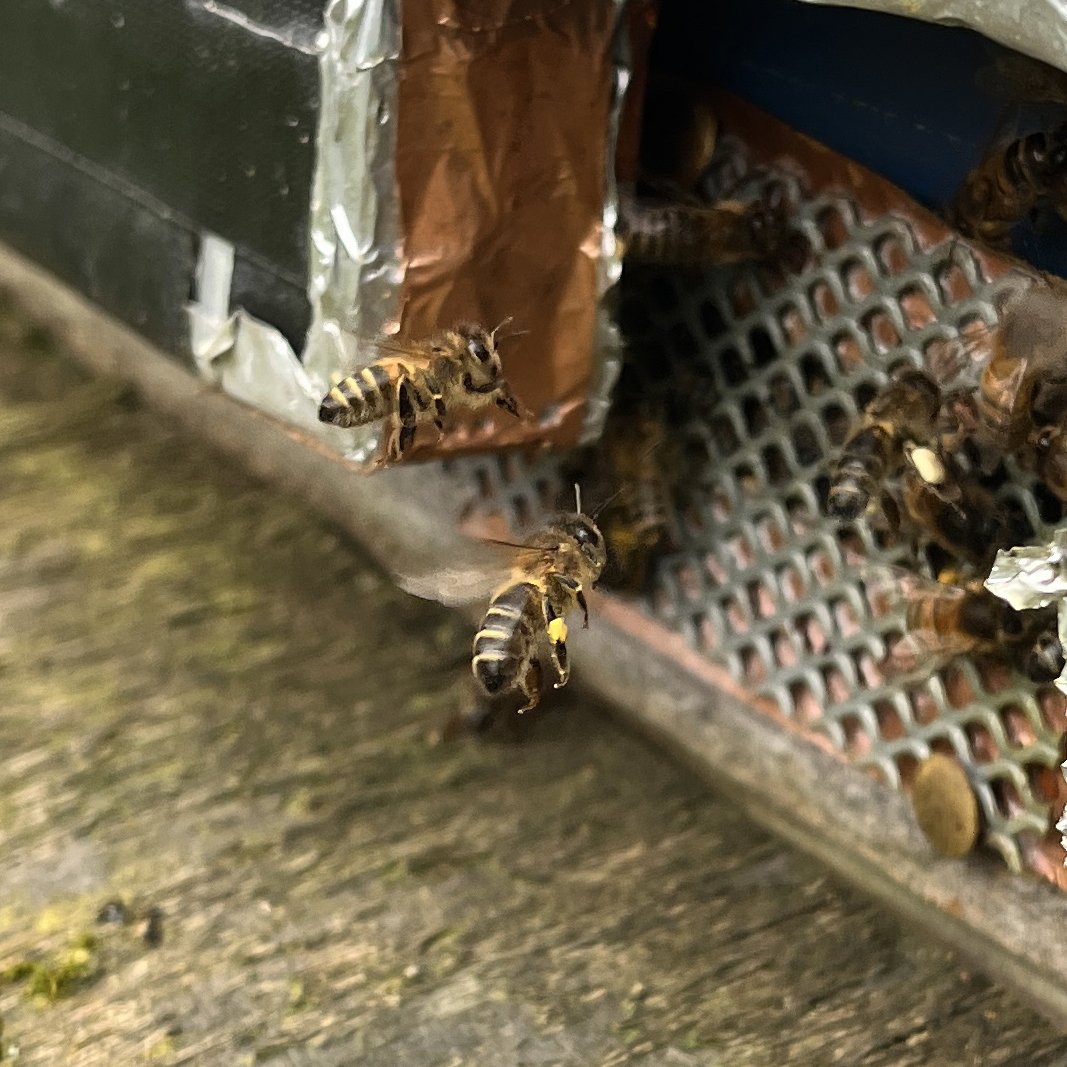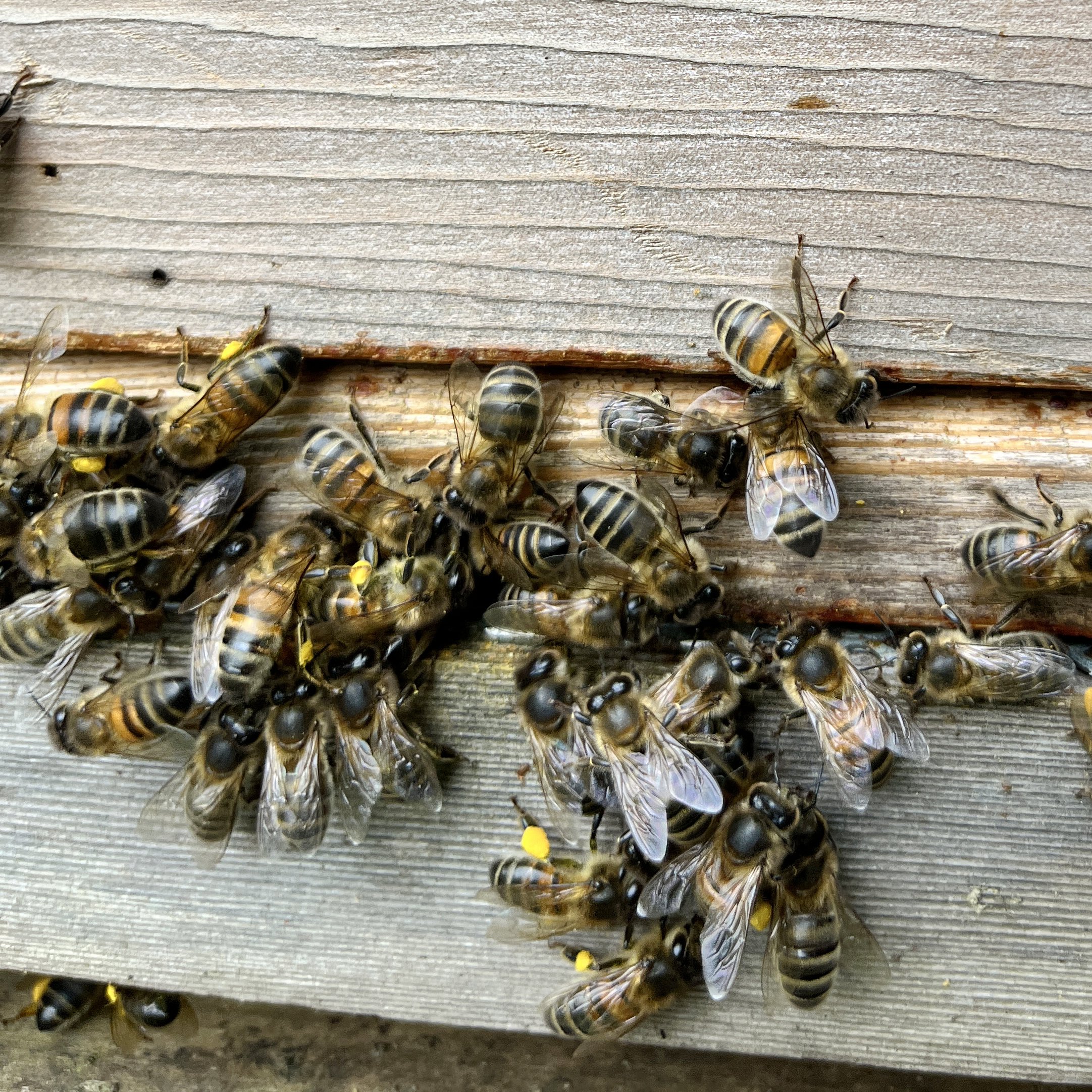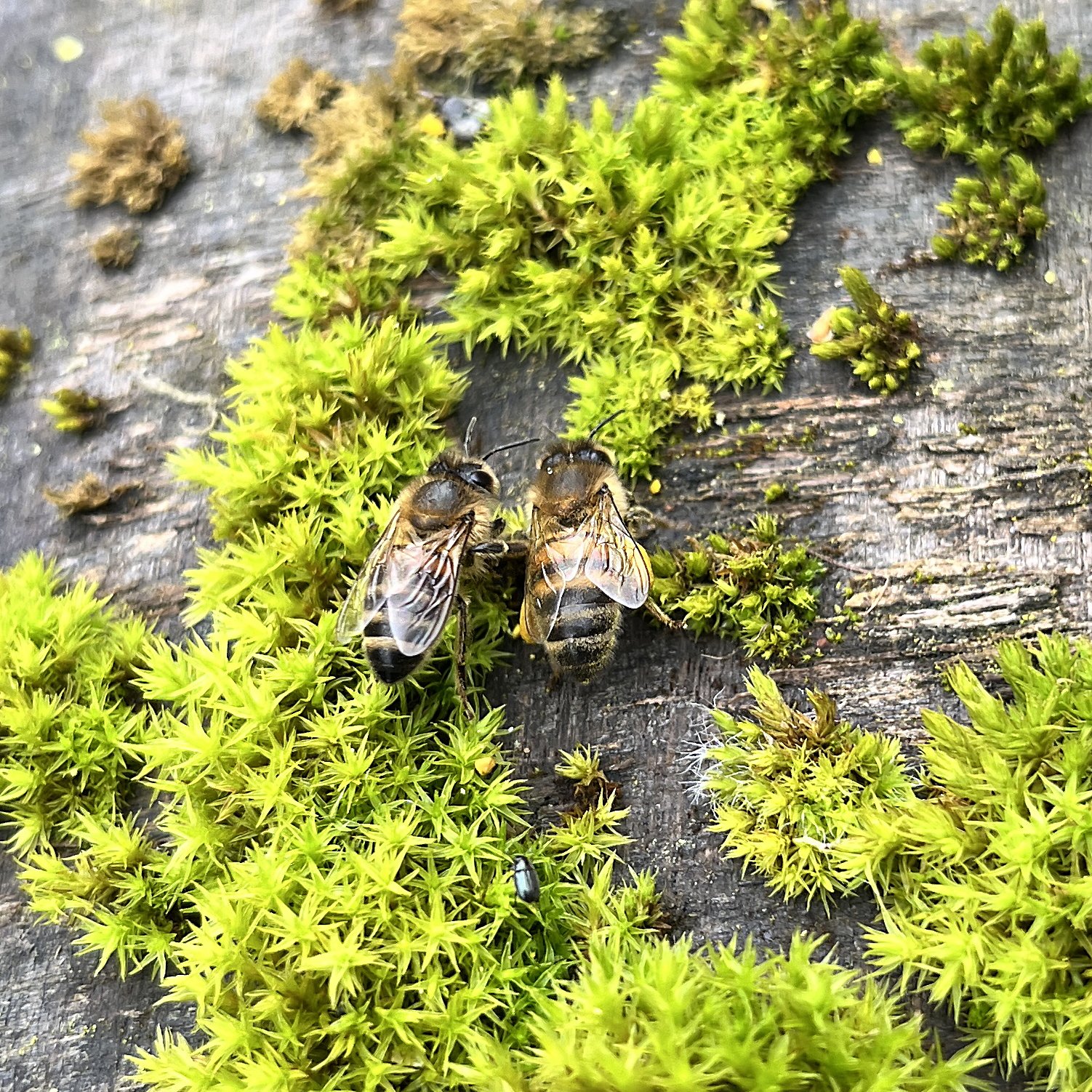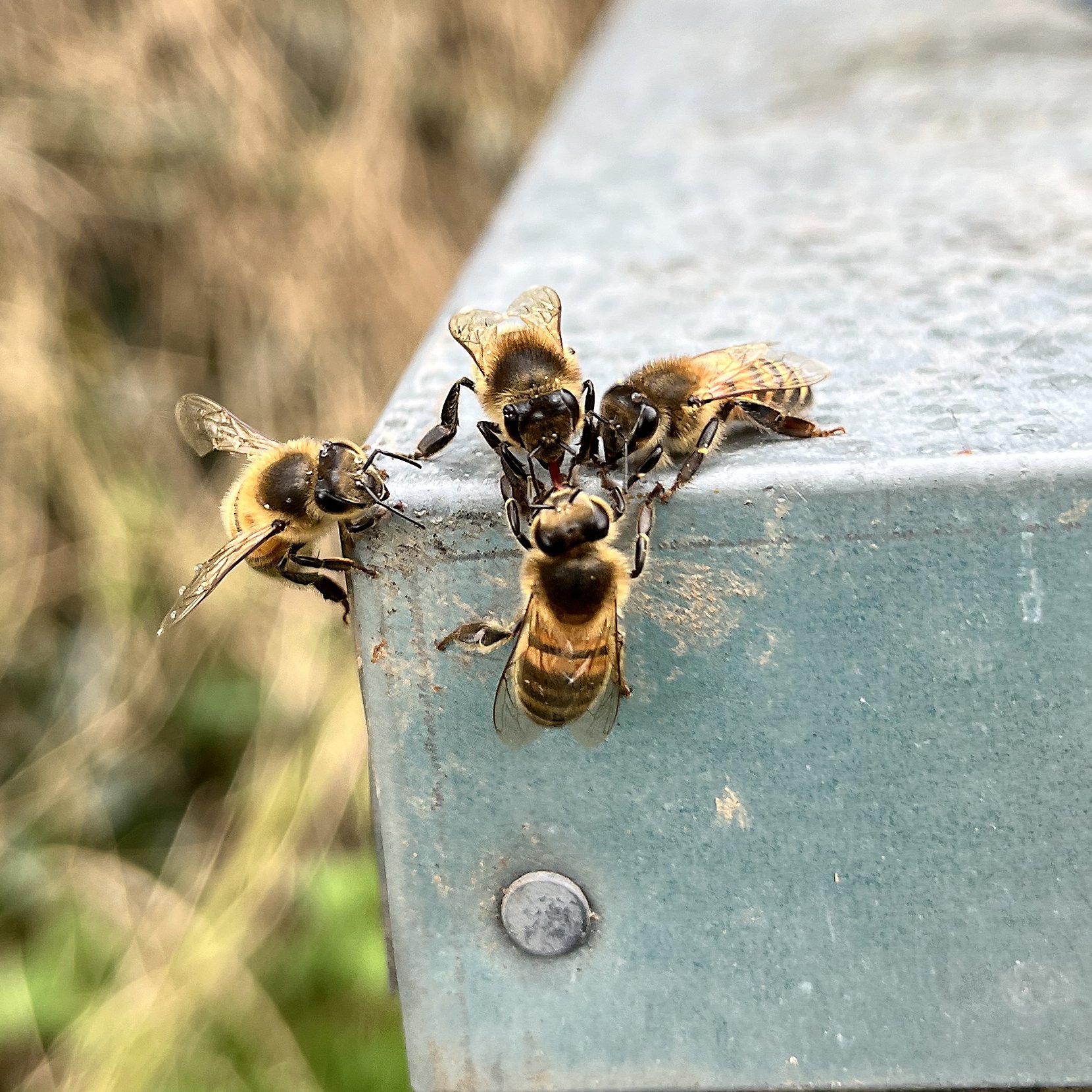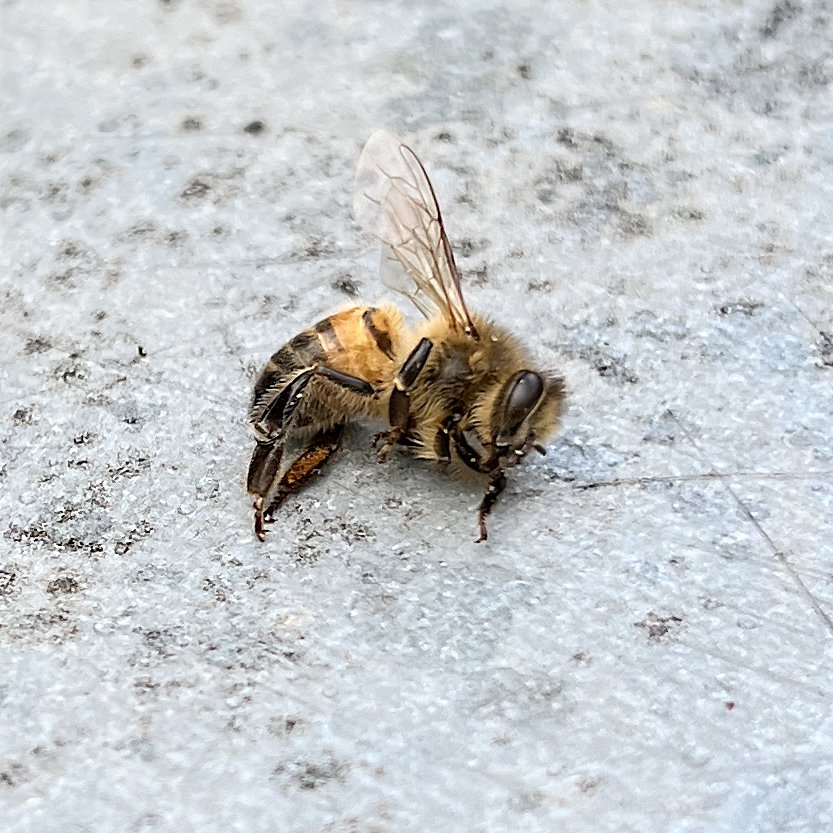THE SUN PUT ITS HAT ON AND THE BEES CAME OUT TO... FORAGE!
The sun came out for 10/15 minutes and out came the girls. It was just below 16° and they were off and at it! What a joy it was to see them getting on with their chores. I didn’t disturb them, I didn’t need to; I could see all was well. Not only could I see them I could hear them too from about 100 metres away and as I got closer I could see they were clambering to get both in and out of the entrances. I still have their winter entrances on as the weather is so unpredictable. However, today when the sun put it’s hat on, one could almost imagine, if one didn’t know better, that some of them even appeared to be enjoying the sunshine and having a little chat!
So what are the honeybees bringing back to their hives and why?
POLLEN
Honeybees and other pollinators have a very intricate relationship with flowers. The male reproductive part of a flower is called the stamen, and this is the part of the flower that produces pollen. While collecting pollen for themselves the honeybees pass it on, co-incidentally, from the stamen of the flower to the stigma, (the female part), which results in the production of viable seeds.
As the pollen falls on to the bodies of the honeybees, they brush it off, using their front legs, towards their back legs which are specially designed with stiff hairs, (corbiculae), to hold the pollen. As the pollen builds up it forms large round balls which beekeepers call pollen baskets. Bees can carry up to half their body weight in pollen.
Once the pollen has been brought back to the hive, the house bees mix it with their saliva and glandular secretions, which contain enzymes and acids that prevent the harmful spreading of bacteria which enables it to be stored for longer.
Pollen is their main source of protein and fat which is crucial for the development of young and adult bees.
NECTAR
Nectar is used by flowers to attract pollinators. It is a sweet sticky substance that sits at the base of the stamens. The honeybees have to dig deep to retrieve it and in so doing the pollen from the stamens, as stated above, then falls on to the bees and as they move from flower to flower it transfers to the stigma. Plants don’t produce much nectar so the honeybees, (and other pollinators), have to visit several flowers before they have enough to take back to their hives thus ensuring cross pollination.
Honeybees have two stomachs. They suck the nectar up using a long straw like tongue, (proboscis), into their two stomachs. Some of the nectar goes into their main stomach and is used for energy. The rest goes into the honey stomach, (crop), where enzymes begin to break it down from complex sugars into simple sugars .
Once back at the hive they pass the nectar from one bee to another in order to reduce the water levels. Once the water reduces to 18% bacteria can’t grow, hence its long shelf life, and the nectar turns in to honey which they store either on its own or mix with pollen to make bee bread. Bee bread is simply a mixture of the pollen and honey which is the honeybees food for the larvae and workers.
Nectar is their main source of carbohydrate.
WATER
Bees don’t store water, they only collect it when its needed. For the honeybees it’s a case of supply and demand! The water carrying bees fill their crops with water and return to the hive, where the house bees will take it from them and distribute it where needed. When the water carriers return to the hive, if lots of house bees come and take the water from them they will go back for more, however if there are few takers from inside the hive, they assume that less is needed and fewer bees will come back with more supplies.
In the summer they will spread the water in a thin layer on top of the sealed brood or on the edge of the cells which house the eggs and larvae. The fanning bees beat their wings up to 180 times per second, which evaporates the water and works like a refrigeration system, cooling down the inside of the hive on a hot summers day.
PROPOLIS
Propolis derives from Greek… ‘Pro’ which stands for entrance to and ‘Polis’ which stands for community or city’ - so it means entrance to the community or city.
The honeybees that collect propolis has a difficult job to do. It’s collected from the stickiest parts of plants using their tongues and jaws and transferred in droplets to their back legs. When returned to the hive it is used for:
• Construction and repair within the hive.
• To fill in cracks which stops predators from getting in and and maintains the temperature within the hive.
• To smooth out the internal walls.
• It’s a natural antiseptic. Honeybees place it around the entrance to the hive and along the sides of the frames which provides a healthy environment for the bees inside.
Well, that’s another week done.
A wee video showing a rather overexcited beekeeper on seeing all the honeybees at her apiary out flying!
I feel we’re gradually getting there. March and April are such unpredictable months but the rainfall here in Herefordshire, once again, has been relentless.
I’m not sure what the farmer has planted in the fields behind my office. I can see them from my desk and walk the dog beside them every day. They are so bogged down with rain and the footpaths are sodden and treacherous. I was hoping for Rapeseed as this is such a great source of Nectar and Pollen at the beginning of the season but, by the looks of things, I think it’s basic chaff so my girls are going to have to fly far and wide this spring.
As usual I end with my “Quote” of the week…
“The keeping of bees is like the direction of sunbeams.”
(HENRY DAVID THOREAU)
Have a great week!
